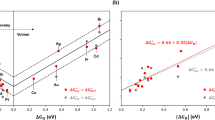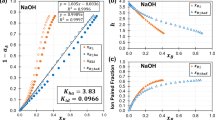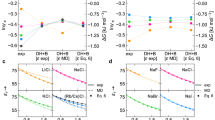Abstract
IT is now forty-three years since the electrolytic dissociation theory was proposed by Arrhenius in 1887, to account for the changes in the physical properties of solutions caused by electrolytes, which had compelled Van't Hoff to introduce the coefficient i into the gas equation PV=RT.
This is a preview of subscription content, access via your institution
Access options
Subscribe to this journal
Receive 51 print issues and online access
$199.00 per year
only $3.90 per issue
Buy this article
- Purchase on Springer Link
- Instant access to full article PDF
Prices may be subject to local taxes which are calculated during checkout
Similar content being viewed by others
Author information
Authors and Affiliations
Rights and permissions
About this article
Cite this article
BRADFORD, S. The Dissociation Theory of Solution. Nature 126, 166–167 (1930). https://doi.org/10.1038/126166a0
Issue Date:
DOI: https://doi.org/10.1038/126166a0
Comments
By submitting a comment you agree to abide by our Terms and Community Guidelines. If you find something abusive or that does not comply with our terms or guidelines please flag it as inappropriate.



